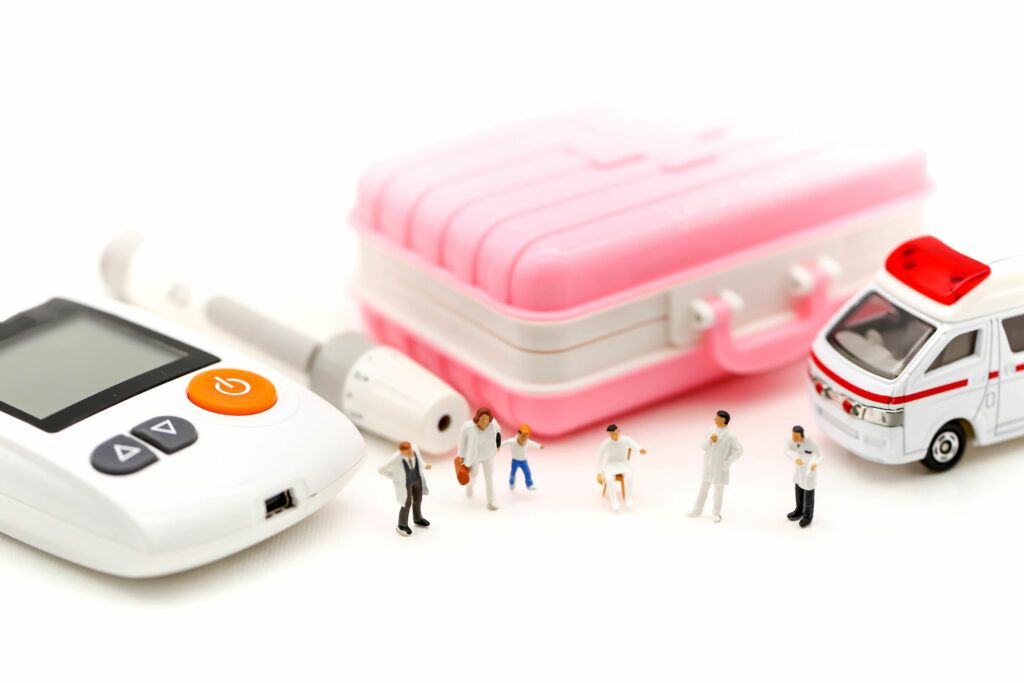Health Articles
Knowledge
Practices When Getting Sick for Diabetic Patients

Practices When Getting Sick for Diabetic Patients
When getting sick, the body will respond in the form of hormones to fight the disease or the illness, which causes the blood sugar to become higher than normal condition. At the same time, the sickness; like nausea, vomit, and bored of food, might cause the loss of appetite and the risk of low blood sugar, especially when using insulin or taking some groups of medicine to reduce the sugar level. Therefore, the practices are needed to make sure that the blood sugar is in the safe level to prevent from coma from high sugar, which are Diabetic Ketoacidosis and Hyperglycemic Hyperosmolar Nonketotic Syndrome.
There are 3 types of Glycemic Emergencies, which are:
1. Diabetic Ketoacidosis (DKA)
Diabetic Ketoacidosis occurs when there is the acute sickness, such as infection, surgery, accident, or receiving some types of medicine that causes the high blood sugar. The blood sugar is often found more than 250 mg./dl. The symptoms are thirsty, dry throat, fatigue, nausea, vomit, gasp for breath, and fruity-smelling breath, including drowsiness and unconscious.
2. Hyperglycemia Hyperosmolar Nonketotic Syndrome (HHNS)
High blood sugar with high osmolarity is often found in the elderly who have poor diabetes control and acute sickness as well as severe dehydration with the blood sugar of higher than 600 mg./dl. In some cases, the blood pressure might become low and the consciousness will gradually reduce until being in a coma.
3. Severe Hypoglycemia
In severe low blood sugar, the patients are unable to help themselves; such as being in a confusion state, fainting, unconscious, seizure, and jerking, and need to receive help from other persons. The symptom will get better when the sugar level is normal. It often occurs when the blood sugar is lower than 50 mg./dl. with or without having the warning signs. For example: Feeling hungry, heart palpitation, sweating, and dizziness.
Practices
1. Symptoms that indicate that you should go to the hospital
– Sick or have fever for 2 days, but the symptoms do not improve
– Nausea, vomit, or diarrhea for longer than 6 hours
– Detect ketones in urine (moderate level or from 2+ and above)
– Check blood sugar at the fingertips before having a meal more than 240 mg./dl. even taking medicines or injecting insulin.
– Dehydration, such as dry and chapped lips, or more severe symptoms, which are gasp for breath, tired, pressure in the chest, and fruit-smelling breath.
The patients must prepare the name list of medicines, symptoms, amount of food that can be consumed, normal body weight, and blood sugar level while being sick.
2. Check sugar frequently
– In Type 1 diabetic patients, check every 4 hours and check ketones in urine.
– In Type 2 diabetic patients, check at least 4 times a day (3 times before having a meal and before bedtime)
3. Do not withdraw from the medicine
– Take diabetes medicine continuously even feeling nausea due to high blood sugar that responds to the sickness
– In Type 1 diabetic patients, more insulin injections might be needed. Do not withdraw from insulin injection, especially basal or long-acting insulin.
– Some types of oral medicine in Type 2 diabetes might need to be withdrawn when getting sick. The doctor consultation is needed.
4. Food intake
– Have food as normal and drink fresh water for half and one glass per hour (in case of no restriction) to prevent dehydration and drive out the excess sugar and ketones via the urine. If unable to eat food as normal, it is suggested to eat soft and easy-to-digest food, such as fruit juice, yogurt (unsuitable when having diarrhea), and thick soup.
5. Buy medicine outside the hospital
– Some types of antibiotics will cause low blood sugar. Notify the history of congenital diseases and the name list of medicines that are currently used to the pharmacist or the doctor.














